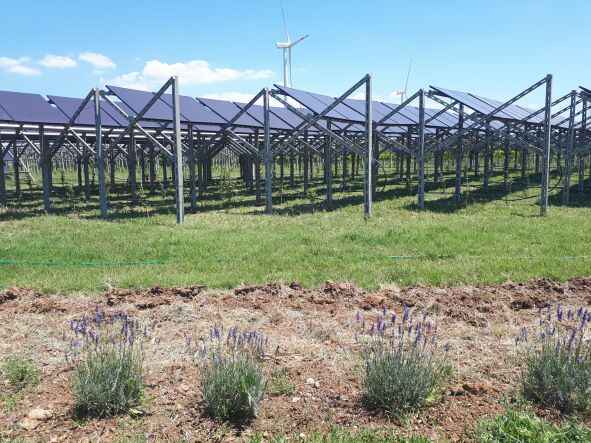5 Decarbonization Strategies Explained
Decarbonization strategies are; material substitution, process optimization, equipment modification, product recycling, and emission treatment.
The three main decarbonization strategies are; material substitution, process optimization, and emission treatment.
This article discusses decarbonization strategies, as follows;
1). Material Substitution (as one of the Decarbonization Strategies)
The idea behind material substitution with regards to decarbonization, is to replace high-carbon intensity materials with more sustainable ones.
Such replacements any occur within any of various contexts, including electricity generation, energy production and product manufacturing.
In electricity generation and energy production, high-carbon energy resources can be replaced with cleaner ones; such as renewable energy options [3]. This is what is known as the ‘energy transition’, and it is a very important concept in decarbonization.
Raw materials in agriculture and industrial manufacturing supply chains, can be selected and substituted to achieve the lowest carbon emissions possible.
Material substitution is effective as a basic measure for addressing the carbon/greenhouse emission problem at its root. It reduces carbon emissions across all stages and sectors of the economy, and improves the sustainability of other practices like recycling that are also designed to prevent resource depletion and mitigate the environmental impacts of production.
2). Process Optimization
Process optimization is a decarbonization strategy that focuses on reducing carbon emissions during the conversion of raw materials to finished products.
This ‘conversion’ could take any of several forms, including waste-to-energy, fuel refining, food processing, and product manufacturing.
Process optimization includes the introduction of low-carbon energy sources, materials, methods and equipment. The end-goal is to increase energy efficiency, energy conservation, and overall performance; while reducing the prospect of carbon emission.
Methods of production can be optimized to exclude materials and steps that facilitate excessive carbon emission, while including those with low carbon potential or intensity.
Innovation is a tool with which decarbonization can be achieved [1]. Integrating artificial intelligence, energy storage and energy management systems, into production facilities; are some innovative measures that can assist in process optimization.
3). Equipment Modification (as one of the Decarbonization Strategies)
The modification of equipment and facilities is a decarbonization strategy that is of particular importance to the industrial sector.
It works alongside process optimization to adjust the approach with which raw materials are handled as they are being used to create products or to serve any other purpose.
Heavy equipment for transport, material processing, and other uses, can all be modified to improve their efficiency in such a manner that reduces energy wastage, and all other unsustainable factors that can lead to carbon emission.

4). Product Recycling
Recycling of products causes them (the products) to act as carbon sinks, by retaining their carbon content without releasing it as CO2 into the environment.
This is because recycling prevents the occurrence of other processes that can cause carbon emission; such as biodegradation.
With recycling, the need for waste management practices like landfilling and incineration may also reduce. These processes contribute to greenhouse emissions, which include carbon dioxide [2].
Recycling may however occur in the form of waste-to-energy conversion, whereby waste material is transformed to useful energy instead of being lost to the environment.
Carbon capture and storage (CCS) equipment can also be integrated with recycling and waste treatment facilities, to isolate CO2 for storage or utilization.

5). Emission Treatment (as one of the Decarbonization Strategies)
Treatment of all kinds of carbon-intense emissions is the most practical and effective decarbonization strategy. It is however also the most expensive.
‘Emissions’ may include liquid waste, such as industrial effluents and other types of wastewater. These materials can be high in carbon content, usually in the form of organic biomass.
The inclusion of steps and equipment for isolating carbon dioxide during their treatment, before releasing these wastes into the environment, is crucial.
More commonly, carbon capture can be implemented as part of treatment measures for gaseous emissions from all kinds of fuel-dependent systems; including cars and electricity generation facilities.
Because of the significant contribution of manmade emissions to global atmospheric carbon output, treating these emissions directly is very important toward achieving the goal of net-zero carbon emission, or carbon neutrality.
Conclusion
Decarbonization strategies are;
1. Material Substitution
2. Process Optimization
3. Equipment Modification
4. Product Recycling
5. Emission Treatment
References
1). Cunliff, C. (2018). “An Innovation Agenda for Deep Decarbonization: Bridging Gaps in the Federal Energy RD&D Portfolio.” Available at: https://doi.org/10.13140/RG.2.2.15080.90887. (Accessed 4 November 2022).
2). Jeswani, H.; Smith, R. W.; Azapagic, A. (2012). “Energy from waste: Carbon footprint of incineration and landfill biogas in the UK.” The International Journal of Life Cycle Assessment 18(1). Available at: https://doi.org/10.1007/s11367-012-0441-8. (Accessed 4 November 2022).
3). Kabeyi, M. J.; Olanrewaju, O. (2022). “Sustainable Energy Transition for Renewable and Low Carbon Grid Electricity Generation and Supply.” Frontiers in Energy Research 9:45. Available at: https://doi.org/10.3389/fenrg.2021.743114. (Accessed 4 November 2022).
